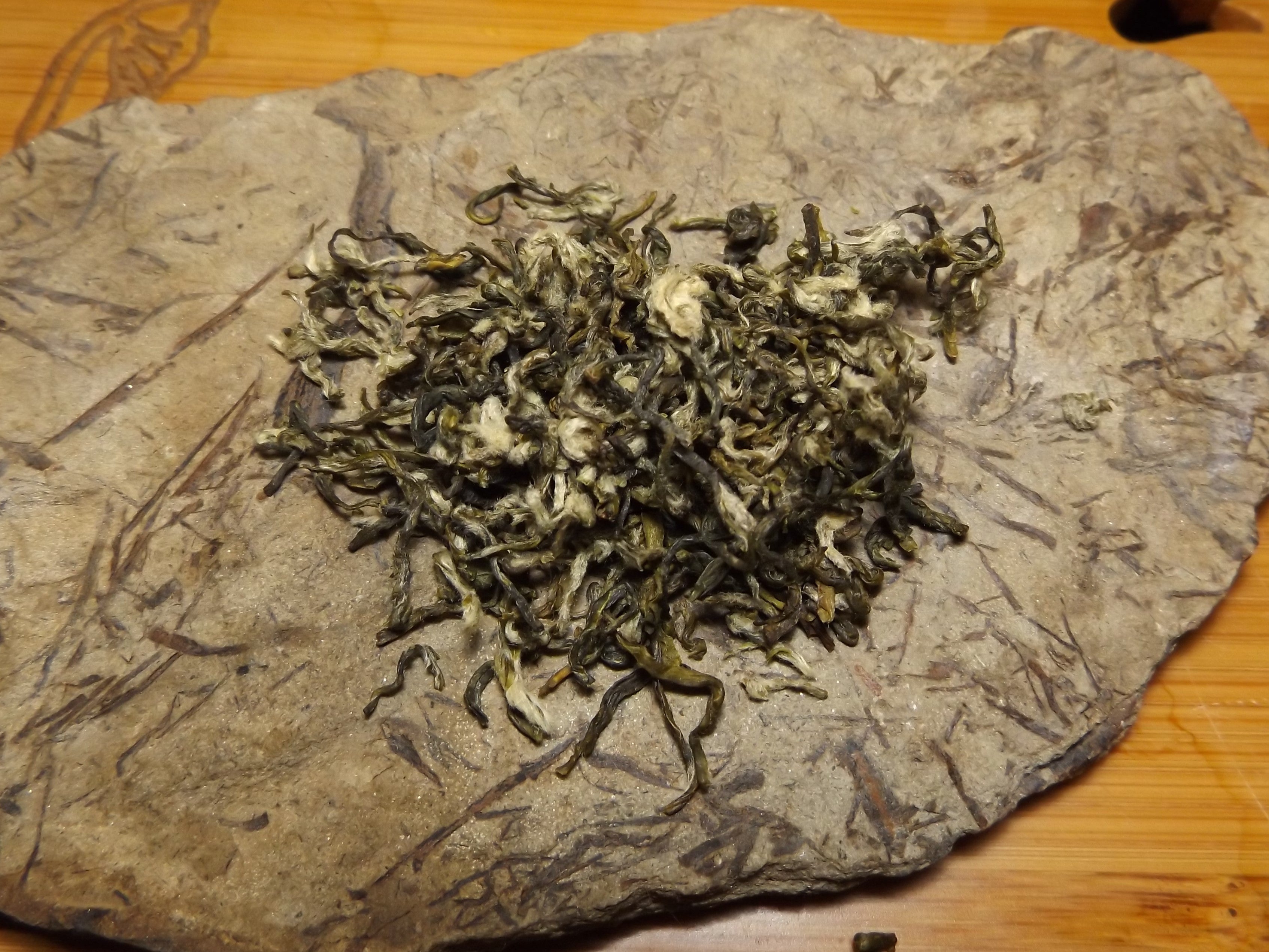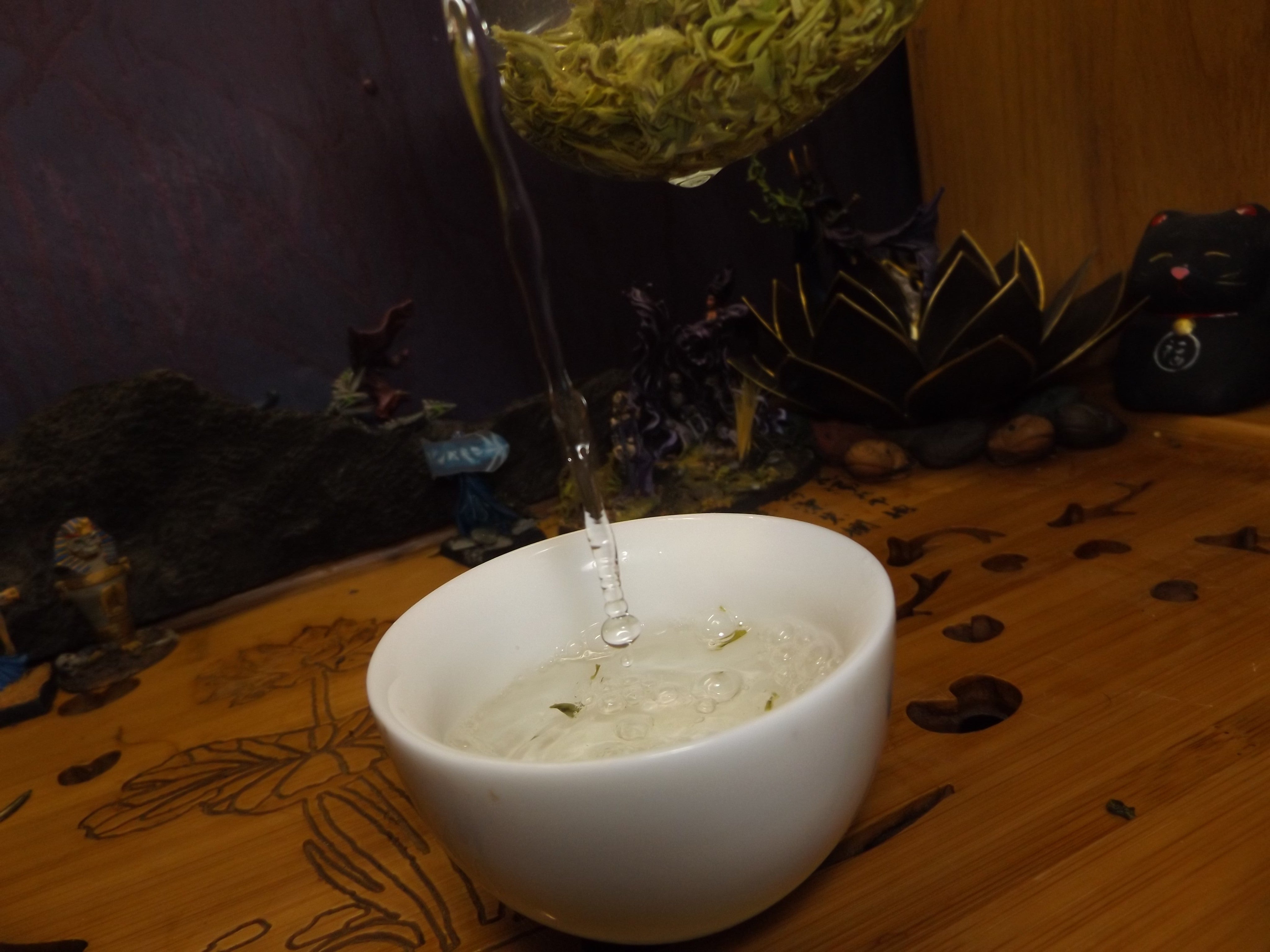An Exploration of Green Teas

From Lincang in Yunnan, Yunsi is a tea made from the same large-leafed Da Ye Zhong plants used for Pu’er. Assamica leaves are usually much larger than their Sinensis relatives. I have also always found them to be more on the savoury end of the green spectrum, which is good because not everyone wants their greens sweet. The aroma of the dry leaves is a great blend of savoury and crisp, like a summer salad, full of cucumbers, water chestnuts, sesame seeds, zucchini, green beans, and a touch of distant peony flowers. Once steeped, the leaves become even more savoury, with notes of cooked spinach, bok choy, zucchini, asparagus, and water chestnut. It smells like a delicious veggie stir-fry!
If you like savoury green teas then you are going to love this one, with a great thick, smooth mouthfeel and vegetal umami. This is an incredibly crisp tea. I felt very refreshed after my session with it! Another thing I really enjoyed about this tea was its aftertaste of grilled veggies (again that seems very seasonally appropriate).
Next up is an immensely fuzzy Biluochun, a very classic (and popular) tea and one quite familiar to many tea drinkers. Harvested on Qing Ming (Chinese Tomb-Sweeping Day), from the traditional Lao Ping Zhong cultivar and traditional Xishan (West Mountain), this Biluochun is extra fancy, and you can tell just from looking at the tiny trichome covered hairs that it is quality stuff. The aroma of this tea is pretty much the opposite of the very savoury Yunsi, with delicate sweet notes of chestnuts, water chestnuts, corn silk, celery, and a very light fresh bok choy finish. This is very much a sweet green tea... at least as long as you keep an eye on steeping temperature and time. Biluochun has a bitter soul that likes to appear when you least expect it.
Once you steep this tea, the aroma still stays pretty light and sweet, but it does pick up more of a green edge with additional notes of lettuce and bean sprouts. This is the tea for those who love their greens light and sweet, with a delicate and smooth mouthfeel. The taste combines alfalfa sprouts, water chestnut, sesame seeds, soybeans, corn silk, butterhead lettuce, and sweetgrass. It is impressively nuanced for a tea that manages to be so delicate, full of flavor but never overwhelming. Biluochun is definitely a green tea that requires attention, so drink this one on a day when you can devote all your attention to it.
Onward to Guzhu Zi Sun, or Purple Bamboo Shoot from Guzhu Mountain. This is one of my favorite green teas and I was so glad to try Nannuoshan’s! The name is a reference to the buds used to make this tea resembling young bamboo leaves. It has quite a long history, being loved by Lu Yu in the Tang Dynasty (granted the way they prepared this tea back then was quite different: being more similar to the preparation of Matcha, it was not steeped using the whole leaves until the Yuan Dynasty). The aroma is a perfect balance of savoury and sweet, combining notes of parsnips, zucchini, sweet snap peas, artichoke, and a tiny hint of flowers at the finish.
The taste is wonderfully crisp and sweet with a strong savoury quality as well. It blends parsnips, honeysuckles, butterhead lettuce, chervil, peas, and celery with a lingering aftertaste of cooked zucchini and delicate distant flowers. Of the teas explored here, I think this one was my favorite, as I am a sucker for green teas that really balance their sweet and savoury; and give extra points for having a strong herbaceous note.
Lastly is a brief look at a green tea that belongs in its own category: a Jasmine scented Huangshan Maofeng, a classic green tea in its own right, but given an extra floral burst with the scenting process. Usually, I am not the biggest fan of jasmine scented greens (preferring jasmine whites) but this one was exquisite! Immensely sweet and not too strong in the jasmine scenting (sometimes they can be very overwhelming) it is much like being a hummingbird sipping on flowers and honestly a bit magical.
Written by Amanda










